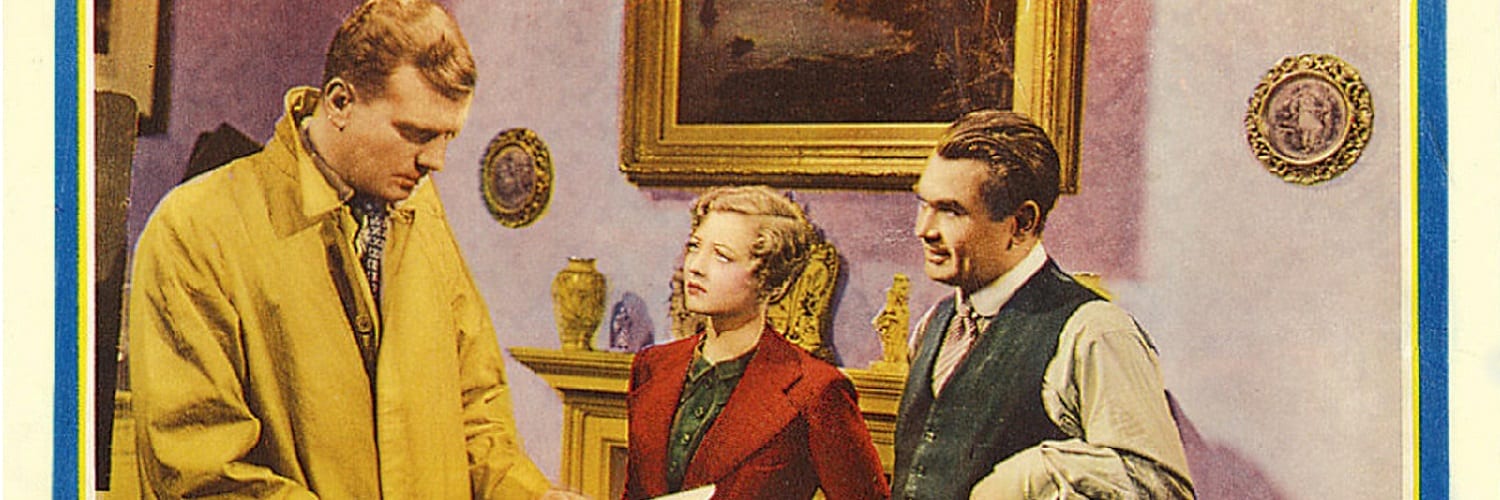Week 4: Alfred Hitchcock’s "Sabotage"

In the last week of our Hitchcock in London book club, we examine "Sabotage," (1936) the film he adapted from Joseph Conrad’s novel "The Secret Agent" (1907). The film makes some noticeable changes from the novel, in its setting, representation of the police, and in the role of Winnie. It also includes two famous sequences that illustrate Hitchcock’s philosophy about the importance of editing and the differences between surprise and suspense.
Hitchcock After London
Presented by Susan Ohmer
Even after Hitchcock left London in July 1939 to move to Hollywood, his films continued to incorporate aspects of British culture. Hollywood offered a wealth of opportunities to directors: access to famous stars and powerful producers, renowned set and costume designers, and the most advanced technology of the time. And films produced in the U.S. circulated all over the world, in contrast to the more limited distributions of British films. Hitchcock’s first U.S. film, “Rebecca” (1940), displays elaborate sets and costumes and the talents of Laurence Olivier and Joan Fontaine. Adapted from the novel by Daphne du Maurier, the film takes place at an English country house whose grandeur and opulence reflect a fantasy of Britain when the country itself was enduring the Blitz.
In 1947, Hitchcock directed “The Paradine Case,” based on the novel by Robert Hichens. It was a legal drama in which a noted barrister, played by Gregory Peck, compromises his career when he falls for the defendant played by Alida Valli. The courtroom set meticulously reconstructs London’s Old Bailey, even including recent damage from German bombing. A few years later, Hitchcock took advantage of the postwar trend of shooting in Europe to direct “Stage Fright” (1950) in London. The behind-the-stage drama follows characters played by Jane Wyman, Marlene Dietrich, and Alastair Sim as they uncover a murderer. Scenes featuring West End theatres and the Royal Academy of Dramatic Arts anchor the film in its London location. In 1954, “Dial M for Murder,” adapted by English playwright Frederick Knott from his own play, takes place mainly inside a fictional London flat, while “The Man Who Knew Too Much” (1956) revels in location shooting all over the city, from Mayfair and South Kensington, to Brixton and Camden Town.
Hitchcock’s final London film, “Frenzy” (1972), brought the director back to the city for a nostalgic return to places from his youth, such as Covent Gardens, where his father bought the produce sold in his stores. From its opening helicopter shot of London Bridge to the aerial views of characters roaming the city streets, the film celebrates a London that is only a memory today.
From Book to Screen
Presented by Susan Ohmer
Two significant changes from the novel to the film are in the choice of time period and the depiction of several characters. The film’s contemporary setting links the film to events in Britain in the 1930s, and changes in the characters of Winnie and the detective increase our sympathy for them.
"Sabotage" and London
Presented by Susan Ohmer
“Sabotage” gives us a wonderful sense of the people and spaces of London in the 1930s. In particular, the decision to have Mr. and Mrs. Verloc operate a movie theater instead of a shop that sells pornography creates interesting opportunities and interactions.
"Sabotage," Suspense and Pure Cinema
Presented by Susan Ohmer
Hitchcock was interested in the unique qualities that made film different from other art forms. In particular, he focused on the creative possibilities of editing. In this video, Professor Susan Ohmer talks about how Hitchcock creates a feeling of suspense through editing, and why he believed that editing was more important even than acting.
View the Event
Presented by Susan Ohmer
Subscribe to the ThinkND podcast on Apple, Spotify, or Google.
Featured Speakers:
- Susan Ohmer, The William T. and Helen Kuhn Carey Associate Professor of Modern Communication, University of Notre Dame
- Kieron Webb, Head of Conservation, British Film Institute
- Rev. Jim Lies C.S.C., Director for Academic Initiatives & Partnerships, University of Notre Dame, London, England
Additional Resources
Presented by Susan Ohmer
- Hitchcock spoke often about the difference between surprise and suspense. You can listen to him discuss that idea here.
- At a key moment in the film, one of the characters takes a moment to watch Walt Disney’s short cartoon “Who Killed Cock Robin?” (1935). The entire film is available here (8 min.)
- To celebrate the restoration of the “Hitchcock 9” that Kieron Webb talked about, CNN created a survey of the director and London that wraps up our series nicely.
Congratulations
Presented by Susan Ohmer
You’ve now completed all four parts of the London Book Club series, Hitchcock in London.
We look forward to seeing you back for the next London Book Club. In the meantime, be sure to explore the other events, series, podcasts, articles and videos on ThinkND.
